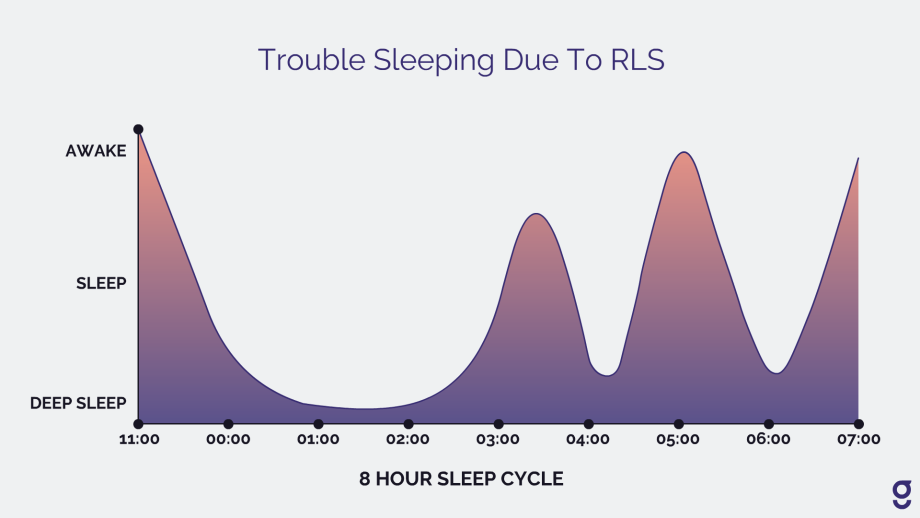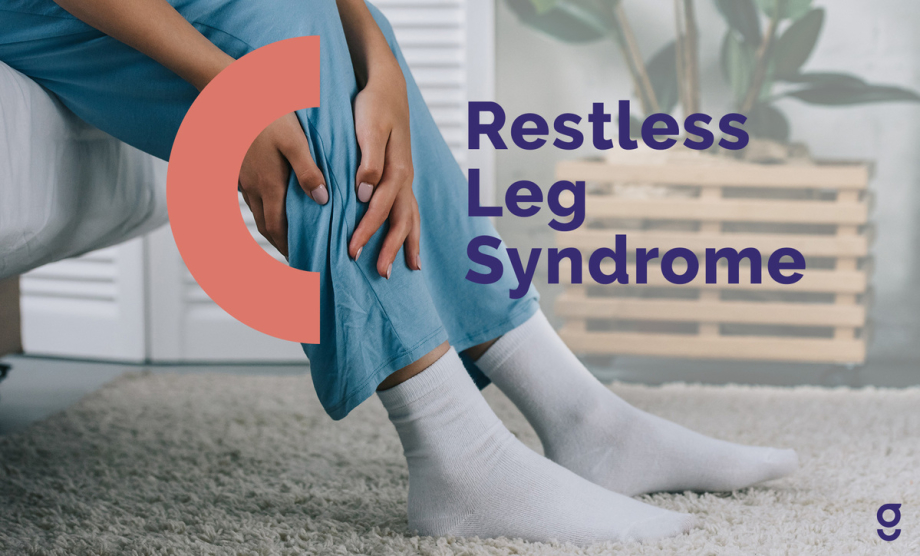Restless Leg Syndrome (RLS): Symptoms, Diagnosis & Treatment
Contents:
What is Restless Legs Syndrome?
What Are The Symptoms of Restless Legs Syndrome?
How Is Restless Leg Syndrome Diagnosed?
What Is The Treatment of Restless Legs Syndrome?
What is Restless Legs Syndrome?
(name=what) Restless Legs Syndrome (RLS) is a movement disorder that interferes with sleep. It is described as unusual sensations in the legs (or arms) relieved by movement, like walking. RLS symptoms worsen when a person is at rest, usually in the evening or while sleeping. Most people with RLS also have periodic limb movements of sleep (PLMS) - repetitive movements of the legs while sleeping.
RLS is related to changes in body function. Two of them are iron deficiency and dopamine. Genetic factors may be involved, and RLS might also be related to other conditions like severe kidney disease and pregnancy.
What Are The Symptoms of Restless Legs Syndrome?
Sensations
(name=symptoms) You may have difficulty trying to describe the symptoms. They include a strong urge to move the legs and uncomfortable sensations deep inside the legs. You may use terms like restless, twitchy, need to move, tension, itching, painful, or burning to describe them.

Location
Most often, the sensations involve the lower legs, but they may affect other areas like your thighs or arms.
The symptoms usually affect both legs but may go back and forth from one leg to the other. Rarely, RLS affects only one leg.
Varied Symptoms
The frequency of symptoms varies, ranging from rarely to daily. They may also be different from one episode to the next.
Sleep
Due to the timing of the symptoms, RLS disrupts sleep. You may have trouble falling asleep and wake up often during the night. Daytime fatigue is common and may cause challenges at work or school, or with your other activities.

How Is Restless Leg Syndrome Diagnosed?
(name=diagnosis) RLS is diagnosed based on a person’s description of symptoms. Your doctor will ask you questions about your symptoms, the location, and how they impact your sleep. The questions will also help the doctor rule out other conditions with similar symptoms.
There are no tests to determine whether or not a person has the condition. One exception is a sleep study which can identify periodic leg movements of sleep (PLMS) since it is often present with RLS.
What Is The Treatment of Restless Legs Syndrome?
(name=treatment) Treatment may or may not be necessary. A significant factor is the degree to which RLS disrupts sleep and daily functioning.
Medicines
Once diagnosed, your doctor may recommend one or more medicine. Two are regularly prescribed: dopamine agonists: pramipexole (Mirapex™) and ropinirole (Requip™). There are other types of medicine that may also be prescribed. For those with iron deficiency, an iron supplement may be recommended.
Non-prescription Approaches
Several other approaches may be used, including:
Cognitive Behavioral Therapy (CBT), a type of talk therapy (psychotherapy)
Wearing [pneumatic] compression devices, which are inflatable cuffs around the legs

Although treatment can help relieve symptoms, there is no cure.
With moderate to severe symptoms, your doctor may recommend prescription medicine or other therapies. You may have mild symptoms that don’t require prescription medicine. In either case, you can participate in our sleep program.
It includes cognitive behavioral therapy for insomnia (CBT-I), mind-body techniques like yoga, nutritional support, and exercise. You may also receive supplements and medicines shipped to your home.
The first step in our sleep program is a 5-minute assessment that allows us to look at your specific symptoms and needs. Start your free assessment today.
